Armenia
Q79797Armenia (Akkadian Uraštu; Old Persian Armina): ancient kingdom, situated along the river Araxes (modern Aras), the Upper Tigris and the Upper Euphrates.
For the early history of Armenia, see Urartu.
Achaemenid Armenia
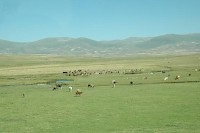
From the mid-sixth century onward, Armenia was a satrapy of the Achaemenid Empire; how it had become part of the kingdom of the Persians, is unclear. One possibility is that the earlier kingdom called Urartu had been subjected to the Median Empire, and this may have happened as early as 605 BCE, after attacks by nomads who lived north of the Caucasus (known to the Greeks as "Scythians", Sakesinai, or Cimmerians). The Medians were overthrown by the Persian king Cyrus the Great in 550, and Urartu was annexed by the Persians at the same time. Alternatively, Urartu retained its independence and was conquered in 547, after a direct Persian intervention.
However this may be, the country rebelled against its Persian overlords after the coup d'état of the Magian usurper Gaumâta (or Smerdis) had been suppressed by the counter-coup of Darius I the Great. The new king sent two armies against an unknown Armenian leader, commanded by the Persian Vaumisa and the Armenian Dâdarši. Vaumisa managed to secure the road to Armenia on 31 December 522 in a battle near Izala, which may be 80 kilometers north of Arbela (modern Arbil) or directly north of Nisibis, and continued to Autiyâra, where he won his second victory on 11 June 521. Meanwhile, Dâdarši defeated the Armenians on 20 May 521 near Zuzza, on 30 May at Tigra, and on 20 June at Uyamâ. The second name suggests that this second army moved along the Upper Tigris. These five battles, which are all mentioned in the Behistun inscription, meant the end of the uprising. From now on, Armenia was a stable possession of the Achaemenid empire.
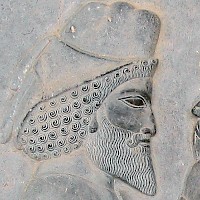
According to the Greek researcher Herodotus of Halicarnassus (ca.480-ca.425), the tribes in the country belonged to the eighteenth and nineteenth tax districts. Every year, they had to pay five hundred silver talents. The geographer Strabo mentions another tax: 20,000 colts.
Under Persian rule, the Urartian language, which was related to Hurrian, was replaced by Armenian, which was the tongue of the common people. Probably, this was not caused by ethnic, but by political changes: when the Persians had conquered the country, they favored the latter, Indo-European language, which is related to Greek and - at a distance - Persian.
Although the Armenians called themselves Haikh, Herodotus makes in his Histories a distinction between the Armenians and Alarodians (a rendering of "Urartians"). He also mentions the Chaldaioi, Kolchoi, Makrones, Mares, Moschoi, Mossynoikoi, Saspeires, Tibarenoi (Tabali in Persian), tribes that lived in Armenia (or in its neighborhood).
Society
Armenia was a tribal society, which means that the social and political units are loosely organized; old tribes disappear as new ones come into being, depending on the situation. The Athenian author Xenophon (ca.430-ca.355) informs us about it in book four of his Anabasis. He describes at great length how in 401/400 BCE an army of Greek mercenaries, which had supported the Persian pretender Cyrus the Younger, had to fight its way back from Babylonia to the Black Sea through Armenia. From the tribes mentioned by Herodotus, Xenophon also mentions the Colchians, Macrones, Mossynoeci and Tibarenes, but introduces the Chalybes, Drilae, Carduchi and Taochi.
Herodotus already knew that Armenia was rich in cattle.note Most tribesmen were poor cattle breeders who roamed with their herds - sheep, cows, horses - between the summer's and winter's pasture. Xenophon mentions no cities, but gives fine description of village live.
[A group of our soldiers] surprised the villagers with their headman, and seventeen colts which were being reared as a tribute for the [Persian] king, and, last of all, the headman's daughter, a young bride only eight days wed. Her husband had gone off to chase hares, and so he escaped being taken with the other villagers. The houses were underground structures with an aperture like the mouth of a well by which to enter, but they were broad and spacious below. The entrance for the beasts of burden was dug out, but the human occupants descended by a ladder. In these dwellings were to be found goats and sheep and cattle, and cocks and hens, with their various progeny. The flocks and herds were all reared under cover upon green food. There were stores within of wheat and barley and vegetables, and wine made from barley [i.e., beer] in great big bowls; the grains of barley malt lay floating in the beverage up to the lip of the vessel, and reeds lay in them, some longer, some shorter, without joints; when you were thirsty you must take one of these into your mouth, and suck. The beverage without admixture of water was very strong, and of a delicious flavor to certain palates, but the taste must be acquired.note
In short, Xenophon's Armenians were a primitive nation, and it comes as no surprise that Xenophon mentions that their warriors fought with simple weapons, such as slings and arrows.
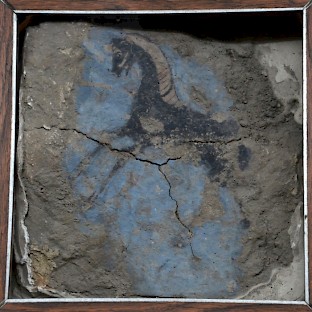
The Persian garrisons, on the other hand, were oases of luxury. For example, somewhere near the Tigris Xenophon visited a palace that could be used by the satrap; he saw houses with storage towers, which were probably used by the officers.note Xenophon mentions an artificial road leading toward this settlement.note In the neighborhood of a second Persian village, Xenophon's men found great supplies of beef (a delicatessen), barley, wine, raisins and pods.note The luxury of Persian settlements is confirmed by the archaeological evidence: e.g., archaeologists discovered wall paintings at Erebuni (modern Yerevan).
Independent kingdom
One of the last Persian satraps of Armenia was Artašata, who became king of Persia under the name Darius III Codomannus (r.336-330). During his reign, the Macedonian king Alexander the Great conquered the Achaemenid Empire (between 334 and 330), but he never occupied Armenia, which appears to have regained its autonomy under a man named Orontes II. (We learn of a new tribe, the Albani.) Several kings, belonging to the Orontid Dynasty, are known from this period:
|
|
|
|
|
|
|
|
|
|
|
|
|
|
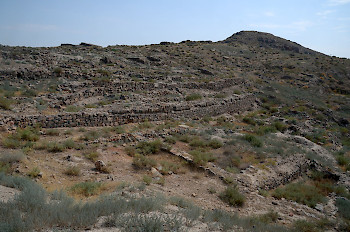
After 200 BCE, parts of Armenia became incorporated in the Seleucid Empire under king Antiochus III the Great, but the country regained its independence soon in the form of two small kingdoms, west and east of the Euphrates. The western kingdom was known as Lesser Armenia and ruled by king Zariadris; the other state was called Greater Armenia and ruled by Zariadris' son Artaxias (r.189-164), the first king of the Artaxiad dynasty. Artaxias founded (following an advice of his Carthaginian friend Hannibal) Artaxata in 188 BCE, and made it his capital.note
| Artaxias I |
|
| Artavasdes I |
|
| Tigranes I |
|
| Tigranes II the Great |
|
| Artavasdes II |
|
| Artaxias II |
|
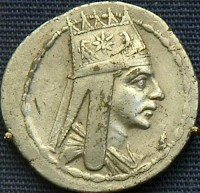
The younger capital Tigranocerta on the Nymphius was built by a descendant of Artaxias, Tigranes II the Great (r.c.95-c.55), who had been able to reunite the two Armenias and briefly ruled over the entire East, but got involved in the Third Mithridatic War (73-63) and was defeated by the Roman generals Lucullus in 69 and Pompey in 66 BCE. His dynasty remained in power, though.
From now on, Armenia was one of the battlegrounds between the Romans and the Parthians, an Iranian nation that had, in the course of the late third and second century BCE, replaced the Seleucids in what is now Iran and Iraq. Armenia was to be an almost permanent source of conflict.